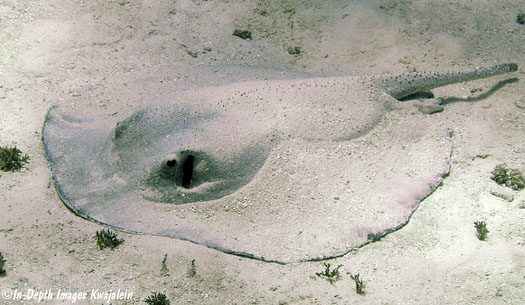
The porcupine ray gets its common name from the hard pointy warts that cover its dorsal surface and tail. It is seen in sandy lagoon areas as well as sand patches and channels on the seaward reef. Like some of the other stingrays, it is often first noticed as a cloud of sand being raised from the ray digging in the sand for food, which seems to consist mostly of burrowing worms and crustaceans. Unlike most of the other local stingrays, the porcupine ray does not have a venomous spine on the tail.

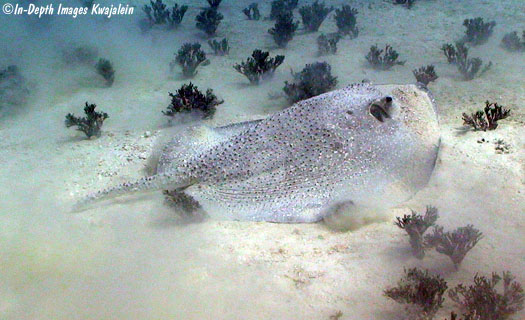
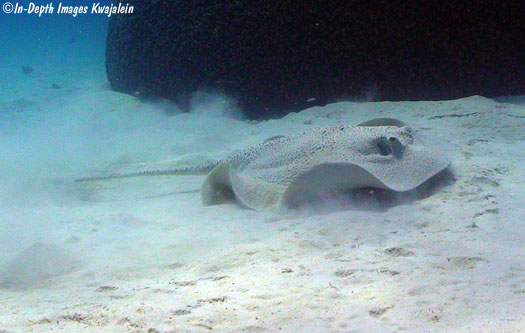
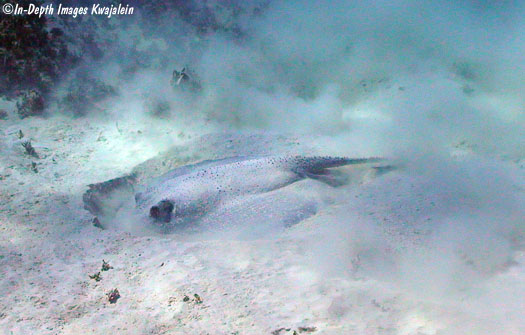
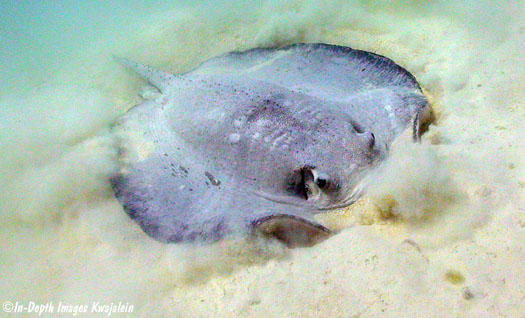
Raphaël Forns took this excellent shot of a mating train, a single female pursued by six males in Ailuk Atoll.

Occasional individuals can be seen resting on the hard reef.
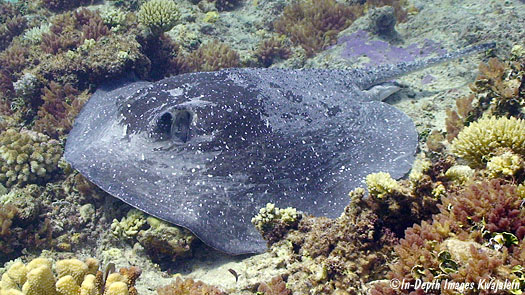
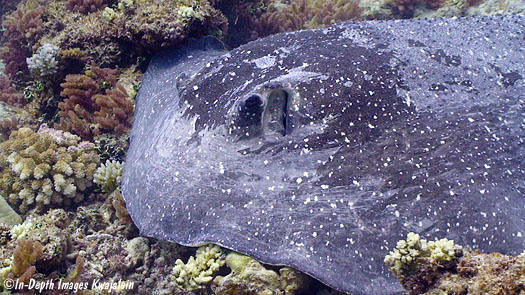
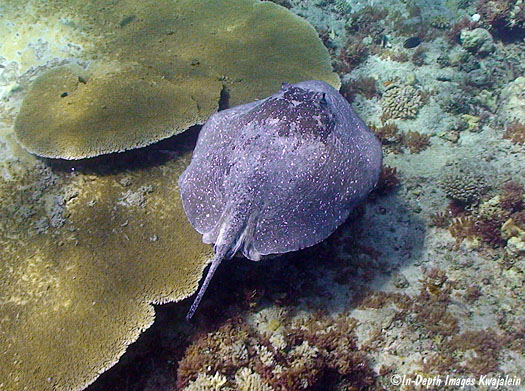
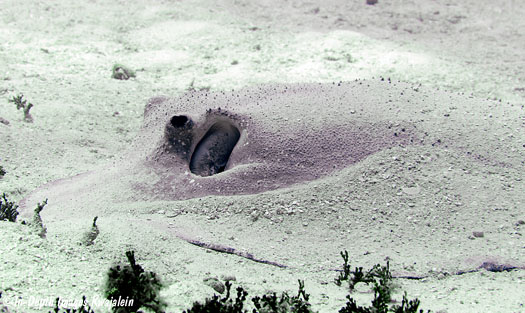
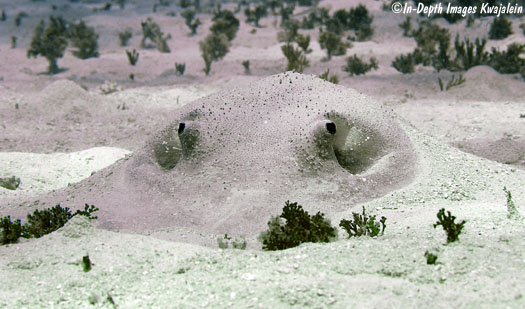
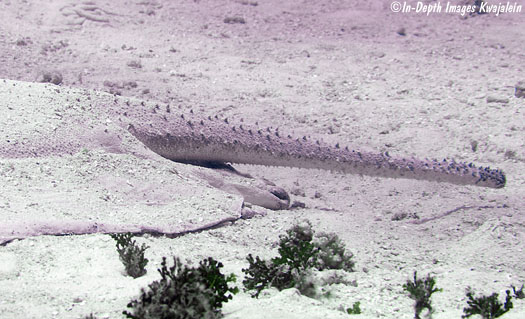
Created 1 October 2013
Updated 2 May 2024